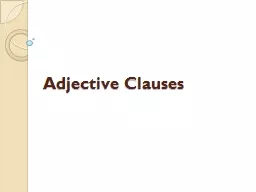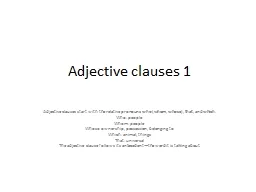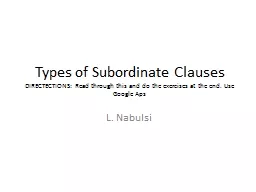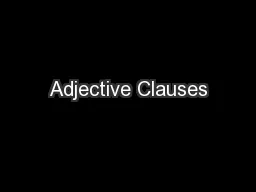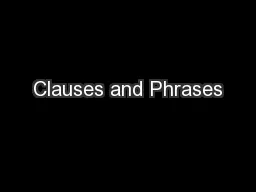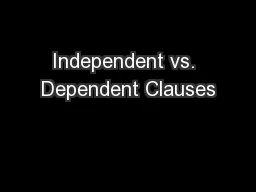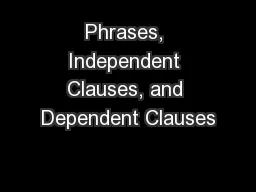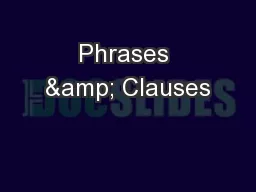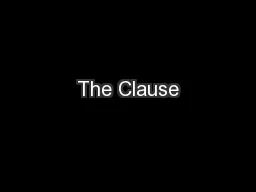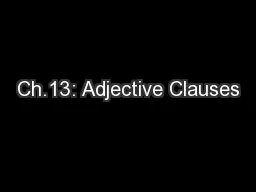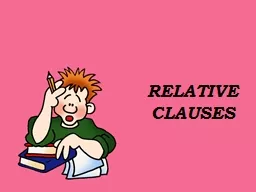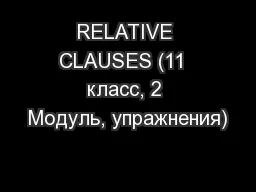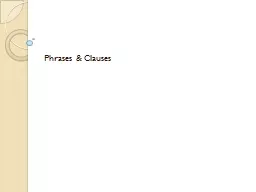PPT-Adjective Clauses Adjective Clauses
Author : ellena-manuel | Published Date : 2019-06-29
An adjective or relative clause is a dependent clause that functions as an adjective in a sentence It modifies nouns pronouns or a whole sentence It begins
Presentation Embed Code
Download Presentation
Download Presentation The PPT/PDF document "Adjective Clauses Adjective Clauses" is the property of its rightful owner. Permission is granted to download and print the materials on this website for personal, non-commercial use only, and to display it on your personal computer provided you do not modify the materials and that you retain all copyright notices contained in the materials. By downloading content from our website, you accept the terms of this agreement.
Adjective Clauses Adjective Clauses: Transcript
Download Rules Of Document
"Adjective Clauses Adjective Clauses"The content belongs to its owner. You may download and print it for personal use, without modification, and keep all copyright notices. By downloading, you agree to these terms.
Related Documents

